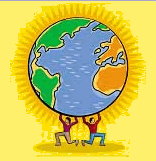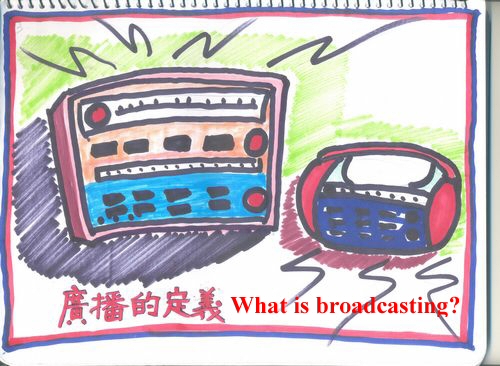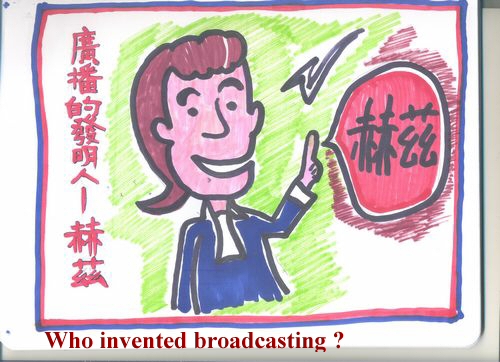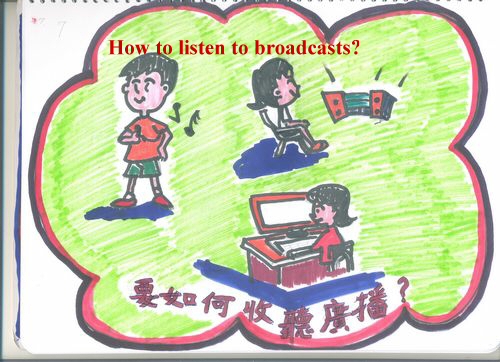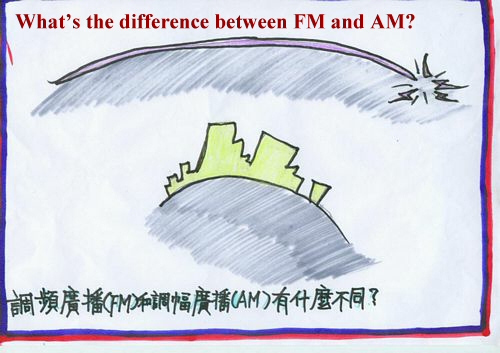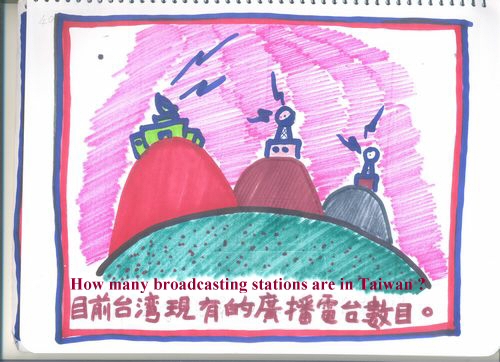
[About broadcasting][Common knowledge][Hosts]
[Programs][Digital broadcasting]
Broadcasting Common knowledge
To help the reader to
understand everything without too many difficult jargons.
|
What is broadcasting? |
|---|
|
Broadcast refers to “sending signals through radio
wave in order to relay message to many people in a large region.” In English, broadcast
includes Television (TV) and Radio. However, because the invention of sound
broadcasting came first, |
|
|
|
Who invented broadcasting? |
|---|
|
In 1873, Scottish Physicist James clerk Maxwell published the famous electromagnetic theory, which explained that the path of charged particles moving in air is similar to its path moving in wire. His theory became the foundation for studying radio wave communication and he became the “father of radio”. In 1888, German
scientist Heinrich Hertz published a study report that proved the existence of
electromagnetic wave as well explain the method of producing,
transmitting and receiving radio wave. To commemorate his contribution, the scientific
community defined the numerical unit for radio frequency with his name Hertz/Hz
in 1967. In 1895, Italian
scientist Gugliemo Marconi began using radio waves
on radio transmission. When the Titanic sunk in 1912, radio
communication was used and more than 700 people were saved. In 1906, In broadcasting history, Maxwell, Hertz, Marconi and De Forest were inventors with great contributions. |
|
|
|
How is a broadcast transmitted? What tools are required? |
|---|
|
A radio station converts sound into electronic signals, and they become radio waves through radio transmitter and transmitted via antenna. Listeners far away can use the radio (receiver) to receive radio wave and the signal returns to the original sound. That is the principle of broadcast transmission. The primary tools for radio transmission are radio transmitter and antenna. |
|
|
|
How long is the history of broadcasting? |
|---|
|
Traditional broadcasting is divided into amplitude
modulation (AM) and frequency modulation (FM), AM broadcasting was invented
right after WWI ended, but listening to radio didn’t become an integral part of
people until WWII. There’s been more than 90 years of history since the development of AM broadcasting. |
|
|
|
How to listen to broadcasts? |
|---|
|
Using a radio. Currently there are many types of radios including walkman, boom boxes, small stereo, home stereo and car radio. Some of the MP3 players and cellular phones have built-in FM radio function. In addition, one can use the Internet and listen to online radio program. |
|
|
|
What’s the difference between FM and AM? |
|---|
|
The difference between FM and AM is the difference in “modulation”.
FM is transmitted by “frequency modulation” and AM is transmitted by “amplitude
modulation”. Both methods have advantages and disadvantages. AM system is simpler and the wave can be transmitted farther. However, its fidelity is low and there are much more noises, which makes it a bad choice for transmitting music compared with FM. FM has better sound quality, but because a higher frequency is used for transmission, FM waves are easily blocked by buildings and geographical obstacles, and therefore, form no-reception zones or cause interference, which means some listeners will not be able to hear the broadcast clearly. |
|
|
|
What are the facilities and equipment in a broadcasting room? Are they expensive? |
|---|
|
A professional broadcasting room must have soundproof facility. The basic equipment is a mixer and microphones, as well as PC-assisted broadcasting system, MD, CD, digital switcher, and telephone connection. You’ll need about $1.5 to 2 million NTD for a comprehensive broadcasting setup. |
|
|
|
How many broadcasting stations are in Taiwan? |
|---|
|
Broadcasting is
a special-permission industry. Before 1993, there were only 29 stations in |
|
|
Source of materials and photos : Li, C.R. (2006), Little Broadcasting World, 1st edition, Taipei: Broadcasting Industry Association of R.O.C., pp. 4-18.
